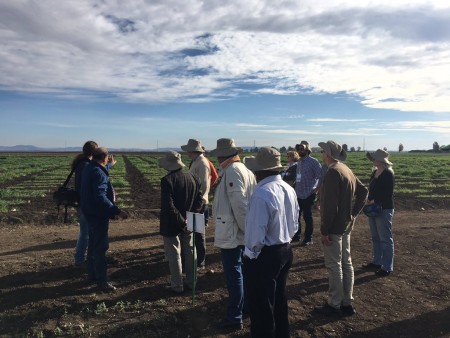You’ll probably remember this statement four months ago from ICARDA’s Director General, Dr Mahmoud Solh. It was, after all, everywhere:
ICARDA requested some of its stored material in Svalbard in order to reconstitute the active collection in both Morocco and Lebanon in large bulks to meet requests for germplasm from the collections we have to meet the challenges facing dry areas globally. Once we multiply these varieties, ICARDA will return part of it to Svalbard as another duplicated set.
The seeds were duly retrieved by ICARDA genebank staff, and the work of multiplication is now in full swing, in both Morocco and Lebanon. Here’s the evidence, thanks to a picture tweeted by ICARDA durum wheat breeder Dr Filippo Bassi earlier today:
